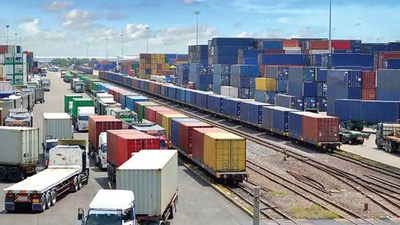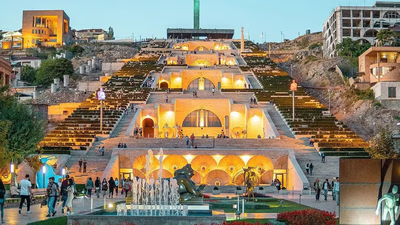
Armenia"s vibrant trade landscape includes verified exporters. "
Russia is Armenia's primary trading partner and a major source of imports. As members of the Eurasian Economic Union (EAEU), Armenia benefits from preferential trade agreements with Russia. Armenia imports a significant amount of natural gas, petroleum products, machinery, vehicles, and various consumer goods from Russia. China has become an increasingly important trading partner for Armenia in recent years. Armenia imports a wide range of products from China, including machinery, electronics, textiles, consumer goods, and raw materials. Chinese imports often cater to the needs of Armenia's manufacturing, construction, and retail sectors.
Armenia has trade relations with various EU member states. The EU is a significant source of imports for Armenia, providing a wide range of products such as machinery, vehicles, chemicals, and consumer goods. Germany, Italy, France, and the Netherlands are among the EU countries from which Armenia imports goods. Armenia also imports goods from other countries, including Ukraine, Belarus, South Korea, Japan, and India. These imports encompass a variety of products depending on the specific needs and trade agreements with these countries.
In this country, people shake hands when greeting each other, and if they are very intimate, they kiss each other. The economic situation in Armenia is such that it can create a very ideal atmosphere. There are many religious festivals in this country and in general the people of Armenia try to adhere to religious festivals. Evidence shows that some people still adhere to traditional clothing and wear long, embroidered shirts in the clothes worn by the people of this country. In this country, people are very serious in the workplace, so it can be seen that they never joke with each other or avoid laughing too much. National holidays are so important in Armenia that Christmas is an important part of the country.
Progress in Armenia has different categories, meaning that the country has placed most of its emphasis on economic growth, although it has also achieved a good ranking in the field of education. Armenia is also a strong country in terms of business and its business growth is very high. Recent studies have shown that the country has been able to use the simplest revenue-generating sectors. As it turns out, the industrial sectors in Armenia are doing their best, and the country has also grown very well in the industrial field. The Armenian government is directing its policies precisely and has been paying more and more attention over the years. As it turns out, Armenia's macro-incomes are such that it can also contribute to global economic growth.
The country has also had a high growth rate in the field of fuels, so that the fuels exported from Armenia are very famous all over the world, and it is clear that the product is of high quality. Transportation is another part of Armenia, in this country the transportation space is going in the simplest possible way and it is clear that the expenses of this sector have also been controlled and it has been able to include good progress. The conditions and information seen in the field of agricultural products of Armenia show that the country has accurately and routinely used the simplest economic sectors and achieved the right result.
In Armenia, it is better to be a little careful when traveling from the street. You need more than luck to succeed in affiliate business. In this country, you have no right to ask anyone for their rights. As the evidence shows, literature, art and music are very important and should be respected in Armenia. Keep in mind that you are never allowed to disrespect anyone's religion in Armenia. As the evidence shows, the culture of the people of Armenia changes periodically and has certain categories. In this country, you have no right to harass women, you will definitely be dealt with.
Germany is one of Armenia's significant partners in importing goods, particularly machinery and equipment. German machinery is highly regarded for its quality and advanced technology. Armenia imports machinery, vehicles, industrial equipment, and electrical appliances from Germany to support its industrial and infrastructure development. As a neighboring country, Iran plays a crucial role in Armenia's import market. Armenia imports energy resources, including natural gas and petroleum products, from Iran to meet its energy needs. Additionally, Armenia imports various goods, such as food products, construction materials, and consumer goods, from Iran.
Despite the political tensions between Armenia and Turkey, they still engage in some trade relations. Turkey is a significant source of imports for Armenia, particularly in terms of construction materials, textiles, food products, and consumer goods. However, the trade volume between the two countries is relatively lower compared to other partners. The United States is another important trading partner for Armenia in terms of imports. Armenia imports machinery, equipment, technology, pharmaceuticals, and consumer goods from the United States. The bilateral trade relationship between Armenia and the United States has been growing, with a focus on technology and innovation.
-

Armenia"s economy, with a GDP of approximately $13. 6 billion, is classified as lower-middle-income. The country is working to enhance its trade relations and diversify its export base, which currently relies heavily on mining, agriculture, and textiles. While Armenia has made progress in the World Bank"s Ease of Doing Business Index, it still ranks lower in the Global Competitiveness Index. Key sectors include chemicals, machinery, and IT, where Armenia has gained recognition for its skilled workforce and growing startup ecosystem. However, regional challenges such as the conflict with Azerbaijan and closed borders with Turkey limit trade opportunities. Despite these hurdles, Armenia has improved its investment climate to attract foreign direct investment (FDI) through regulatory reforms and incentives. Membership in the Eurasian Economic Union (EAEU) offers access to larger markets and preferential trade agreements.
Additionally, Armenia"s Comprehensive Partnership Agreement with the EU aims to strengthen economic ties further. "
-

Armenia"s trade landscape is characterized by its rich mineral resources, particularly copper and molybdenum, which form a significant part of its exports. The country also exports agricultural products like fruits, vegetables, nuts, and dairy items, alongside textiles and jewelry. However, Armenia"s landlocked position poses challenges for expanding trade, particularly with neighboring countries like Turkey and Azerbaijan due to political tensions. This situation has created opportunities for trade with other nations, especially those in the Eurasian Union that enjoy preferential trading terms. Russia stands out as Armenia"s largest trading partner, accounting for nearly 27% of its trade volume. The relationship is bolstered by cultural ties and the benefits of the Eurasian Economic Union. Other notable partners include Switzerland, Bulgaria, Iraq, the Netherlands, China, and Iran. While Armenia imports a variety of goods including energy resources and machinery to support its economy, it often faces a trade deficit where imports surpass exports.
This imbalance necessitates reliance on remittances and foreign investments to sustain economic growth. "
-

Armenia"s economy is classified as an emerging market, with a GDP of approximately $13. 6 billion in 2020. The GDP per capita stands at around $4,500, reflecting lower income levels compared to developed nations. Key sectors include mining, manufacturing, food processing, and construction, with mining being particularly significant due to the country"s rich mineral resources. Remittances from Armenians abroad contribute substantially to national income. Foreign direct investment from countries like Russia and the U. S. supports sectors such as IT and tourism.
Despite challenges post-independence, Armenia has seen growth in various industries, including tourism which attracts visitors from neighboring Iran. The agricultural sector employs about 44% of the workforce but has seen a decline in its GDP contribution over time. The services sector is also vital, encompassing IT, financial services, and telecommunications. Armenia"s economic stability is supported by controlled inflation since 1998 and a free market system aided by international organizations. Taxation on income and corporate profits serves as a key revenue source for the government. "
-

Armenia"s primary trading partner is Russia, which supplies a significant portion of its imports, including natural gas, petroleum products, and machinery. As a member of the Eurasian Economic Union (EAEU), Armenia benefits from preferential trade agreements with Russia. China has emerged as an increasingly vital partner, providing machinery, electronics, textiles, and raw materials that support Armenia"s manufacturing and retail sectors. Germany is another key player in Armenia"s import market, known for high-quality machinery and industrial equipment. Iran also plays a crucial role by supplying energy resources and various consumer goods. The European Union (EU) has strengthened its ties with Armenia through the Comprehensive and Enhanced Partnership Agreement (CEPA), focusing on mutual interests such as economic development and reform support. Despite political tensions with Turkey, some trade continues in construction materials and textiles. The United States contributes to Armenia"s imports through technology and pharmaceuticals. Overall, Armenia maintains diverse trade relations with multiple countries to meet its import needs.
-

Armenia, a landlocked country in the South Caucasus, is bordered by Turkey, Georgia, Azerbaijan, and Iran. Its geography significantly impacts its political and economic relations. The ongoing territorial conflict with Azerbaijan over Nagorno-Karabakh has created a complex relationship, exacerbated by a closed border. Armenia maintains generally positive ties with Georgia, collaborating on various projects despite occasional tensions. Relations with Iran are historically friendly, providing Armenia with vital trade routes. The country is divided into three regions: Greater Armenia, Lesser Armenia, and New Armenia. Politically, Armenia operates as a democratic republic with a National Assembly comprising 131 seats. The political landscape has evolved over time, reflecting changes in governance and public sentiment.
Historical conflicts and geopolitical interests shape Armenia"s interactions with its neighbors, particularly with Turkey due to the contentious issue of the Armenian Genocide. Diplomatic relations remain strained as borders have been closed since 1993. "
-

Armenia"s trade landscape is characterized by strong ties with Russia, China, and the EU, particularly Germany. As a member of the Eurasian Economic Union (EAEU), Armenia benefits from preferential trade agreements with Russia, importing natural gas, machinery, and consumer goods. China has emerged as a vital partner, supplying machinery and textiles that support Armenia"s manufacturing and retail sectors. The EU also plays a significant role in Armenia"s imports, with countries like Germany and Italy providing essential goods. Additionally, Armenia maintains trade relations with nations such as Ukraine, South Korea, and India. The country"s economic growth is bolstered by its focus on industrial development and agricultural products. Despite political tensions with Turkey, some trade continues in construction materials and textiles. The United States has become increasingly important for technology and pharmaceuticals.
Overall, Armenia"s strategic partnerships enhance its economic prospects while fostering regional trade dynamics. "






